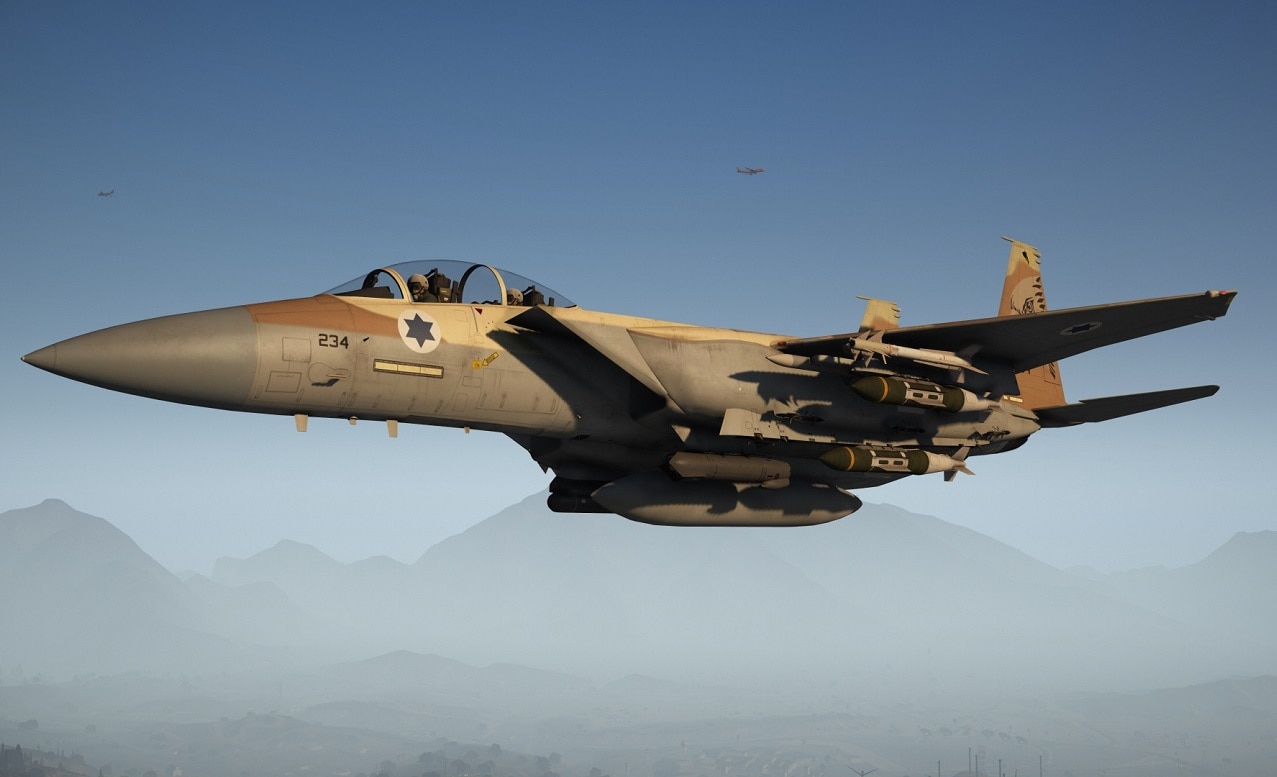Israel has the best air force in the middle east – period. However, what planes make that air force so deadly. One is clearly the new F-35I Adir. But don’t forget that Israel also has some very special F-15s. Meet the F-15I: Israel’s two-seat, twin-engine F-15I fighter jet is the product of the U.S. Air Force’s F-15E Strike Eagle combined with the Israeli Air Force’s unique modifications.
The F-15I Ra’am (Thunder) is the Israeli Defense Force’s (IDF) special variant of the U.S. Air Force’s F-15E Strike Eagle, first entering service in Israel in 1998. McDonnell Douglas (now Boeing) designed the fighter jet to meet Israel’s needs and specifications. The earlier model of the Eagle was crafted as pure air-to-air fighters. Israel’s version incorporates more advanced weapons, avionics, electronic warfare and communications capabilities.
While newer and arguably more advanced airframes have entered the IAF’s arsenal in recent years, the F-15I Thunder remains its “strategic aircraft.”
Why the F-15I?
Israel’s need for a long-range strike platform capable of identifying and destroying targets threatening its borders became apparent following the 1991 Gulf War.
Iraqi’s SCUD ballistic missiles barraged the Jewish state, highlighting the IDF’s lackluster air defense systems. To rectify this inadequacy, the IAF opted to purchase 25 platforms in 1995. Up until this point, Israel had been using the F-15 Eagle variation, which first came into play in a 1978 operation targeting terrorists in Southern Lebanon. The Eagle became an instrumental tool in fighting Syria’s Soviet-made MiGs, ultimately lending to Israel’s tactical success in the Lebanon War.
According to IAF Brig. Gen. Moshe Marom-Melnik, every enemy aircraft that attacked its forces in Lebanon was systematically shot down. “We had a field day, basically, shooting down practically everything that flew. The MiG-21 and MiG-23, which formed the backbone of the Syrian air force, were crushed. As far as our squadron was concerned, the war was more like a shooting range.”
Due to its direct evolution from the Strike Eagle, the F-15I is superficially very similar to its predecessor. However, the Thunder platform is equipped with a number of domestic-designed features. Among the IAF’s advancements include an APG-70 radar with terrain mapping capability. This feature provides a sharp picture that allows the crew to locate targets regardless of weather conditions. The platform also hosts an Israeli-made central computer and an Elbit display and sight helmet (DASH). The Thunder uses the Eagle’s single 20mm M61A1 Vulcan internal automatic cannon and can carry up to 18,000 pounds of fuel and munitions.
While the IAF’s unique modifications have advanced the F-15I into the beast it represents today, the Eagle’s original attributes have aided Israel in its missions. The F-15E’s speed, stability and ranges enabled its successor to be a champion of tactical reconnaissance. The IAF frequently uses the F-15I in conflicts on Israel’s borders and abroad, including in Syria, Lebanon and Gaza. Most importantly, the ability to target Iran and its nuclear facilities remain a priority for the Jewish state, and the Thunder’s capacity to lug more weapons than any other fighter makes it a crucial tool in Israel’s arsenal.
The F-15I’s track record in Israel’s history of warfare and its potential for even more significant upgrades demonstrate why it’s been dubbed the country’s most “strategic aircraft.” The IAF is unlikely to retire its championed airframe in the near future, even with operating a very special version of the F-35.
Maya Carlin is a Middle East Defense Editor with 19FortyFive. She is also an analyst with the Center for Security Policy and a former Anna Sobol Levy Fellow at IDC Herzliya in Israel. She has by-lines in many publications, including The National Interest, Jerusalem Post, and Times of Israel.

